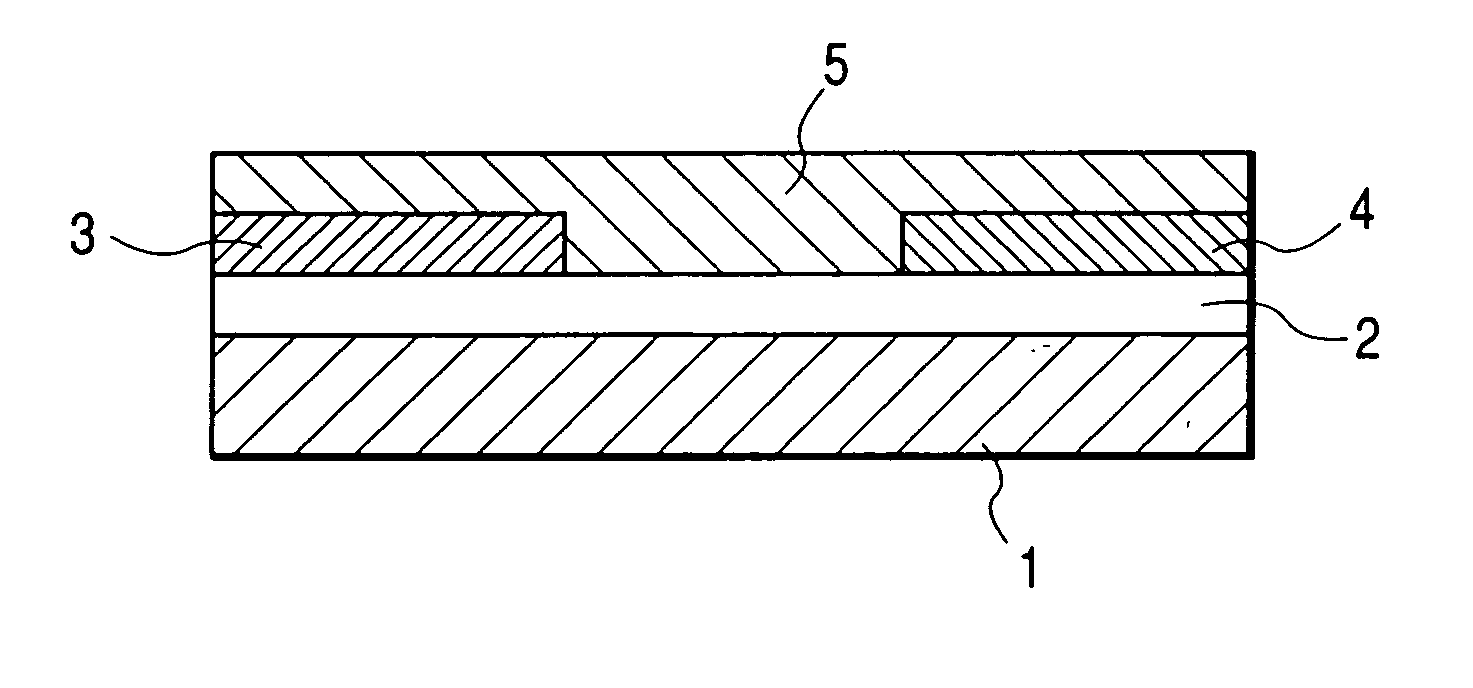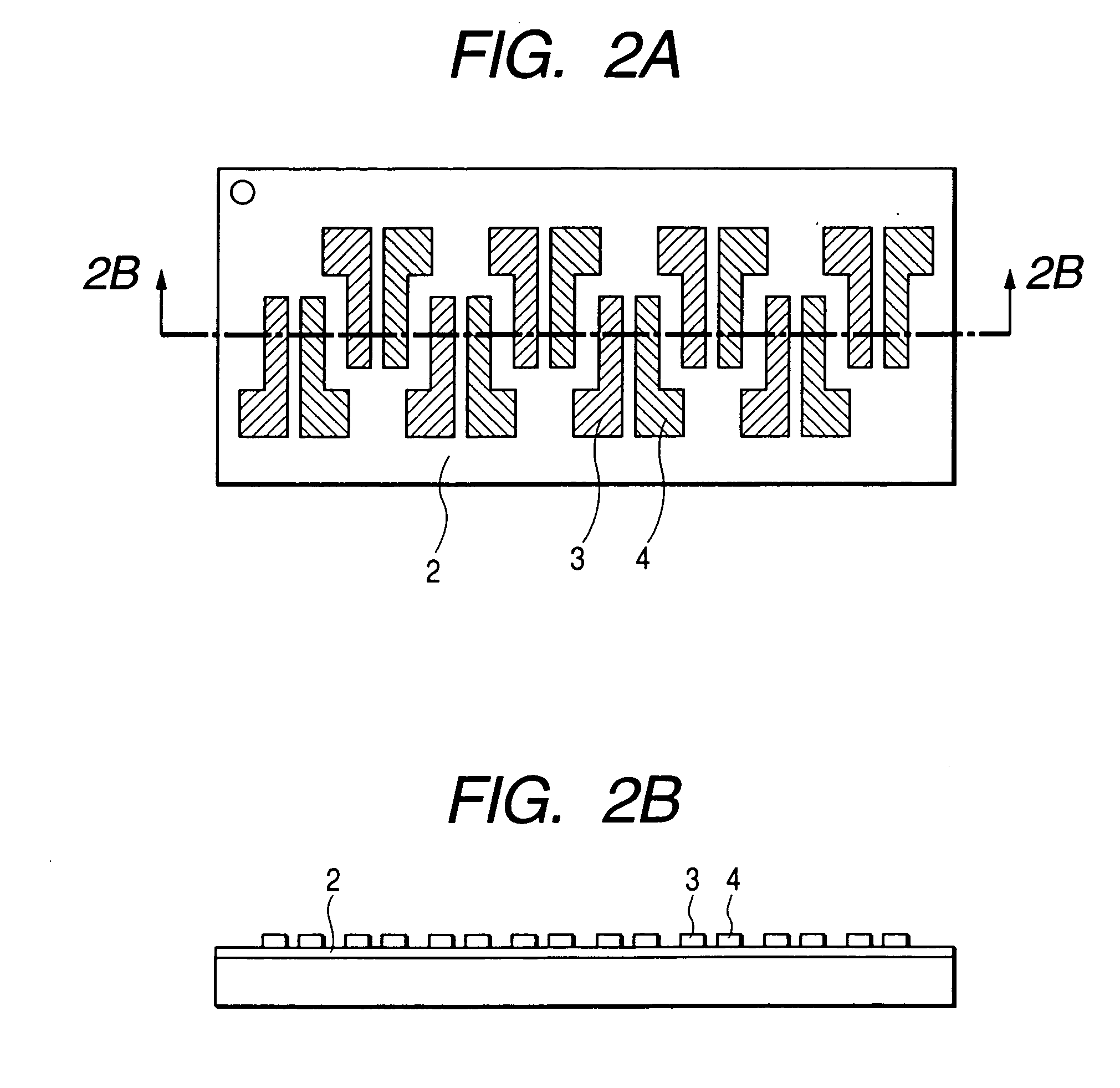Organic field effect transistor and method for producing the same
a field effect transistor and organic technology, applied in the direction of transistors, solid-state devices, semiconductor devices, etc., can solve the problems of difficult purification of materials, and improvement of field-effect mobility, so as to achieve high purity, impaired uniformity of film thickness, and reduced mobility
- Summary
- Abstract
- Description
- Claims
- Application Information
AI Technical Summary
Benefits of technology
Problems solved by technology
Method used
Image
Examples
synthesis example 1
Synthesis of Compound (3)
[0072] 5,6,7,8-tetramethylidenebicyclo[2,2,2]oct-2-ene (1) (12 mmol, 1.91 g) and isoamyl nitrite (75 mmol, 10.0 ml) were dissolved in 80 ml of THF (tetrahydrofuran) in a reaction vessel and refluxed by heating. A solution in which anthranilic acid (91 mmol, 12.5 g) was dissolved in 100 ml of THF was charged into a dropping funnel, and it was slowly dropped. After the dropping, heating and stirring were continued until all raw materials are consumed. After the completion of reaction, an aqueous sodium hydroxide solution was added; stirring was continued; and the reaction solution was extracted with hexane. The resultant organic layer was washed with water and saturated saline, dried over anhydrous sodium sulfate and then concentrated to obtain a crude product. This was purified by silica gel column chromatography (hexane) to obtain the compound (3). The yield was 2.66 g (72%).
[0073] Molecular formula: C24H20 (308.42)
[0074] Shape: White crystal
[0075]1H NM...
synthesis example 2
Synthesis of Pentacene (7)
[0110] In a Pyrex (registered trade name) glass cell, 0.005 g of the compound (6) was dissolved in 2 ml of chloroform. The solution was sufficiently degassed and then irradiated with the metal halide lamp at room temperature. Blue crystals were precipitated after several minutes. They were collected by filtration to obtain the objective. Yield 0.004 g (96%).
example 1
[0111]FIG. 1 shows the structure of the field effect transistor in the present example. First, an N-type silicon substrate was used as a gate electrode 1. A silicon oxide film with a thickness of 500 nm obtained by thermally oxidizing the surface layer of the silicon substrate was used as a gate insulating film 2. Chromium and gold were deposited in mentioned order on the gate insulating film 2, and a source electrode 3 and a drain electrode 4 were formed by a conventional photolithography technique. Then, the resultant substrate was surface-treated by an ozone treatment and then deposited with pentacene (7) prepared in the synthesis example (2) thereon. The film thickness of the thus prepared organic semiconductor layer 5 was 60 nm.
[0112] The field effect transistor with a channel length of 30 μm, a channel width of 10 mm and a thickness of the semiconductor layer of 60 nm was prepared according to the above procedure. The Vd-Id curve of the prepared transistor was measured by Par...
PUM
| Property | Measurement | Unit |
|---|---|---|
| Semiconductor properties | aaaaa | aaaaa |
| Mobility | aaaaa | aaaaa |
Abstract
Description
Claims
Application Information
 Login to View More
Login to View More - R&D
- Intellectual Property
- Life Sciences
- Materials
- Tech Scout
- Unparalleled Data Quality
- Higher Quality Content
- 60% Fewer Hallucinations
Browse by: Latest US Patents, China's latest patents, Technical Efficacy Thesaurus, Application Domain, Technology Topic, Popular Technical Reports.
© 2025 PatSnap. All rights reserved.Legal|Privacy policy|Modern Slavery Act Transparency Statement|Sitemap|About US| Contact US: help@patsnap.com



